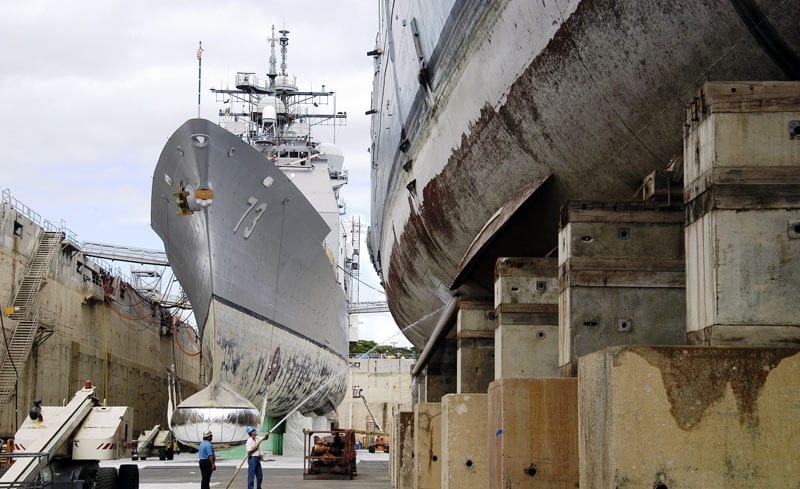 |
| U.S. Navy Maintenance and Modernization Suffer Due to Budget Woes | Defense Media Network |
RAND_RR1235.pdf
Could improve ship operational availability and crew effectiveness at increased maintenance cost.
Key Findings
Benefits, Costs, and Challenges Associated with a 72-Month Operational Cycle
- Moving to a 72-month operational cycle would increase operational presence by about 7 percent, relative to a 32-month cycle.
- A 72-month operational cycle could lead to greater cohesion among crew members, because they would stay together longer and deploy together more often.
- Moving to a 72-month operational cycle would reduce the number of crews needed for the fleet. This could lead to manpower savings, but only if the Navy were to divest itself of these surplus crews and reduce end strength.
- A 72-month operational cycle would lead to a substantial increase in maintenance costs, relative to the 32-month cycle. In the long term, this increase would more than offset the potential savings from reduced end strength.
- It is unclear whether a 72-month cycle will help the Navy cope with several maintenance issues that have accrued over the years.
Recommendations
- Before moving to a longer interval between depot maintenance, improve current maintenance planning and execution. The Navy should correct impediments to availability execution, fully document maintenance requirements for surface combatants, develop a maintenance plan for the longer cycle that increases continuous maintenance and focuses on lifecycle critical maintenance, and evaluate the effect of maintenance demands on private providers.
- Ships entering a longer operational cycle should do so in a high state of material readiness, and this should be verified this with complete evaluations of readiness.
- Award maintenance availabilities in a fashion that allows for sufficient time for planning the work; the surface type commander must commit funding at the time of the award.
- Fine-tune training to fit additional deployment needs.
- Closely manage operating tempo.Use the model described in this report to provide a fleet-wide
examination of maintenance and operational deployments, and how best to manage the various factors that are affected.
Related/Background:
- Extending Depot Length and Intervals for DDG-51-Class Ships | Strategy Consulting | Management Consulting | Global Advisors
- Navy DDG-51 and DDG-1000 Destroyer Programs: Background and Issues for Congress - RL32109.pdf
- spendergast: RAND - Funding Ship Maintenance a Big Problem
- spendergast: Should Burke Flight III DDG move out?
- Scanned Document - OPNAVNOTE 4700 POM-16 8-28-2014.pdf
- ⚡Presentation "The Naval Sea Systems Command (NAVSEA) Reliability Centered Maintenance (RCM) & Condition Based Maintenance Plus (CBM+) Programs PRESENTED BY Marc Borkowski."
- Third Party Planning Contract Implementation Surface Ship Maintenance and Modernization - 2015-07SURFMEPPluncheon.pdf
- Department of Defense Briefing by Rear Adm. Lescher on the Fiscal Year 2016 Navy Budget in the Pentagon Briefing Room > U.S. DEPARTMENT OF DEFENSE > Transcript View
- depot_maintenance_requirements_determination.pdf
- GAO-15-329, NAVY FORCE STRUCTURE: Sustainable Plan and Comprehensive Assessment Needed to Mitigate Long-Term Risks to Ships Assigned to Overseas Homeports - 670534.pdf
No comments:
Post a Comment